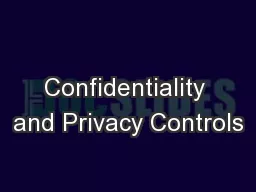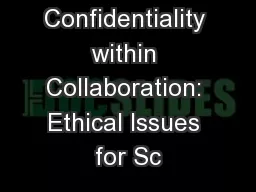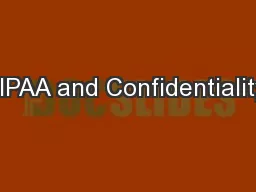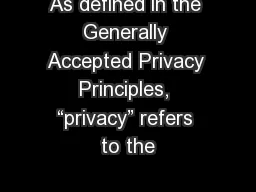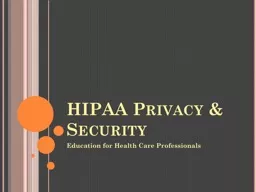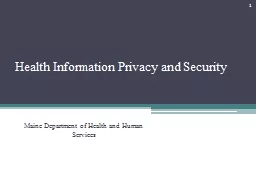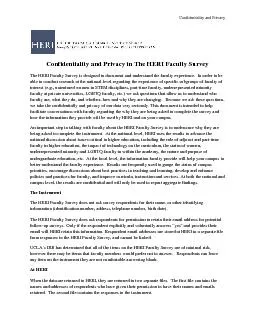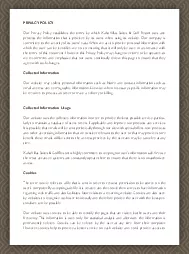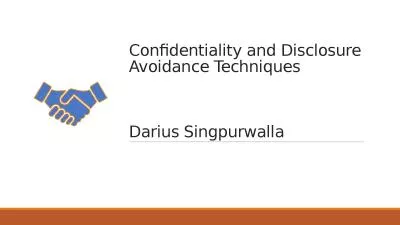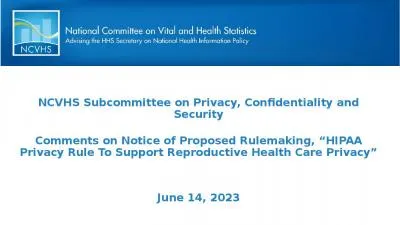PPT-Privacy and Confidentiality of Health Information
Author : YourFavoriteFlower | Published Date : 2022-08-03
112 HIPAA Overview Health Insurance Portability and Accountability Act HIPAA was first introduced by Congress in 1996 due to the advancements in electronic technology
Presentation Embed Code
Download Presentation
Download Presentation The PPT/PDF document "Privacy and Confidentiality of Health In..." is the property of its rightful owner. Permission is granted to download and print the materials on this website for personal, non-commercial use only, and to display it on your personal computer provided you do not modify the materials and that you retain all copyright notices contained in the materials. By downloading content from our website, you accept the terms of this agreement.
Privacy and Confidentiality of Health Information: Transcript
Download Rules Of Document
"Privacy and Confidentiality of Health Information"The content belongs to its owner. You may download and print it for personal use, without modification, and keep all copyright notices. By downloading, you agree to these terms.
Related Documents



